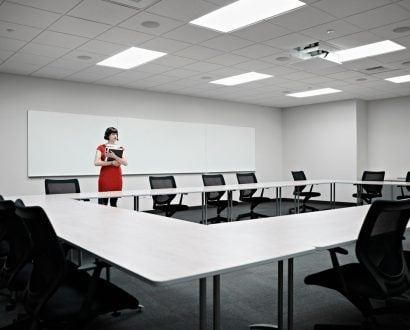How to leverage your existing employees to bridge the talent gap

The other pandemic. This is no ordinary fight for talent. It is rough, unscrupulous, disruptive and breathtaking in its enormity. It is also global. 75 per cent of Australia's CEOs are concerned about the availability of key skills and worldwide, 54 per cent of companies report talent shortages. And, unlike the COVID-19 pandemic, this pandemic has been brewing for some time.
Many factors are attributable, not least our ageing population exiting the workforce and the double-whammy, birth-rates well below replacement levels. Australian workers aged 55 plus more than doubled from nine per cent in 1991 to 19 per cent in 2021 and half a million people are expected to retire in the next 5 years. Europe tells a similar story, with 16 per cent of the working population over 55 years.
This is not a temporary blip on the recruitment horizon. But the solution may be right under your nose – existing employees.
Attention needed
How much attention is given to your employees? It is assured that if you are not, someone else is. Head hunts are on the rise and no longer reserved for senior executives. Expect every level in your organisation to be approached. Finding talent is on everyone's mind; a simple chat at a barbecue can result in a job offer.
In view of the Great Resignation, consider stay interviews, well before it’s too late. They also provide insight for retention.
Skills audit
Too often, we hire, onboard and pigeonhole. What of their hidden talents and transferable skills? The employee sitting in accounts is great with numbers and has phenomenal writing skills, but you didn’t know! Uncovering latent skills and talent simultaneously fills a priority position and increases staff retention.
Discover education levels, other languages spoken and experiences in different industries and countries, not to mention dreams and aspirations. Helping to realise dreams increases loyalty and longevity, and more importantly, connects and engages.
Anticipate future skills and train ahead
The graduate with a strong work ethic or your marketer with a flair for numbers? Are your managers keenly observant, identifying these employees for the future? Nurturing, encouraging and mentoring? Such behaviours and habits become invaluable cultural norms. Conversations with team members about their future connects the dots, encourages and inspires everyone in the process.
Alumni
Who has left, and who do you want back? We have been enlightened by new ways of working; how, when and where we work. What of those employees who followed partners overseas, a parent who couldn’t commit to full-time hours or even those retired. Flexible working, contractor and freelance roles open opportunities to hire back your experienced talent.
Who do they know
Tapping into the network of your employees increases hiring pools expediently. These talent connections are far more reachable and powerful when referred and introduced. Calculate the cost of your empty seat, recruiter costs and time to hire, and the figure is in the tens of thousands. Consider a referral reward to be worth their while and also be good for your organisation.
Diversity in your workforce
If you are fortunate to have diversity within your teams, utilise it. Of course, it benefits you and allows you to better understand your customers, shareholders and also employees. Generational teams provide mentoring or buddy-ships not just for specific or technical work requirements but for life skills. Everyone has a different learning style, and such informal programs can deeply connect people and bring teams together.
Proximity bias
Proximity bias is the difference between the value placed on those physically closer than those who are hybrid or fully remote. Your remote and hybrid workers need consideration. Without a strong connection or engagement, your remote workers may be at the highest risk of leaving. How else can they contribute, and what are your recognition programs for harnessing their value and skills?
Culture of learning
Of course, upskilling, reskilling, sharing of knowledge, training, education and mentoring are a given in creating a culture of learning. But what of our mistakes and failures? Learning from these can be transformative for a business, but we have to know of them. It provides your business with a competitive advantage and your employees with psychological safety, possibly the most potent tool for longevity, retention and engagement. Transparency, open dialogue and trust are conditions for this to happen successfully. Encourage and reward honesty.
Our existing employees have so much to offer. The gift that keeps giving with their current skills, transferable skills, future potential and ability to learn, morph, change and adapt. Leverage and understand your workforce for the now, and for the future of your business.
Roxanne Calder, author of ‘Employable: 7 Attributes to Assuring Your Working Future’, is the Founder and Managing Director of EST10, one of Sydney’s most successful administration recruitment agencies. Calder is passionate about uncovering people’s potential and watching their careers soar.